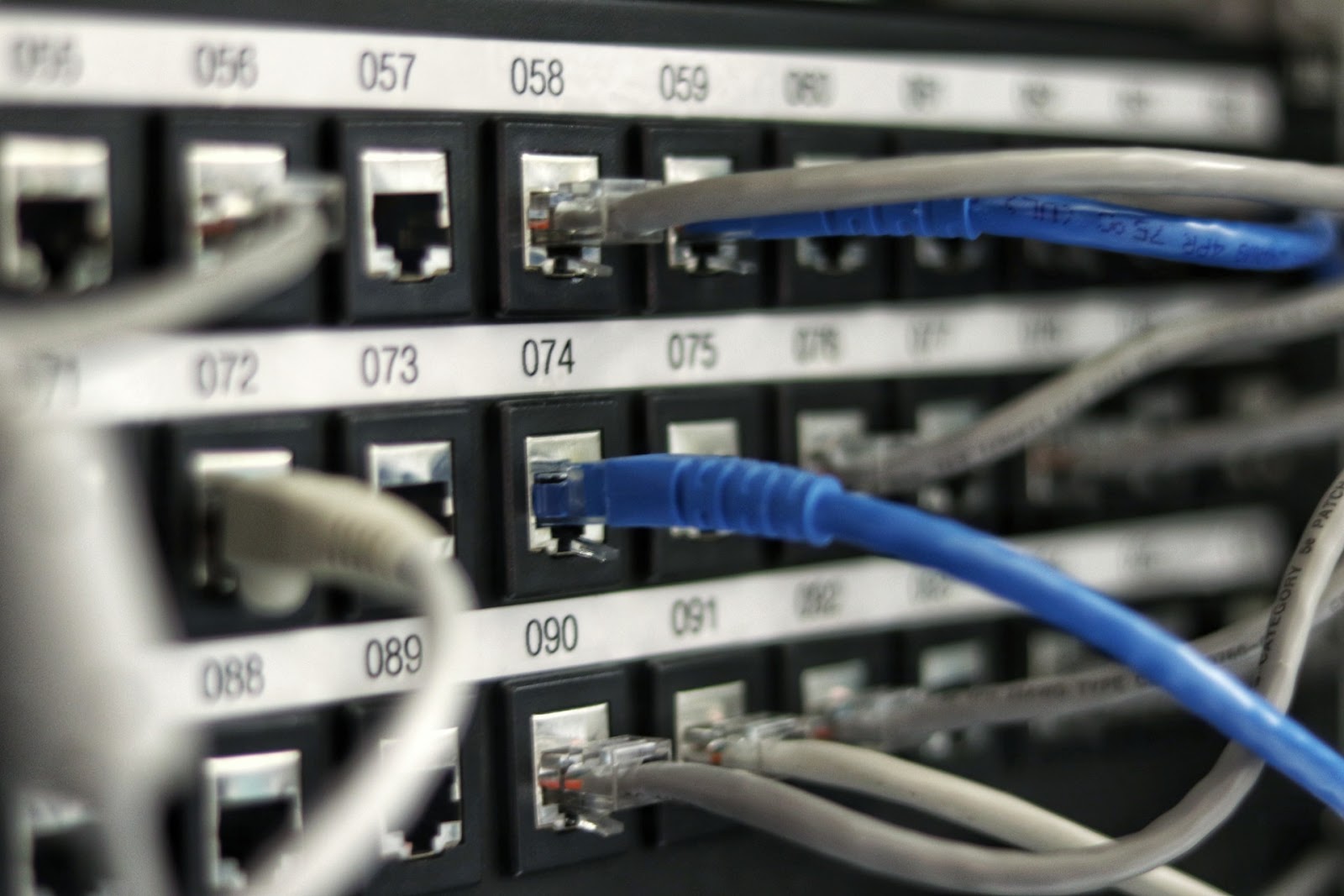
Photo by Conny Schneider on Unsplash
Latency is defined as the time taken by a packet of data to travel from its source to its destination. In simple terms, it’s the delay that occurs when data is transmitted over a network.
As the world becomes increasingly interconnected and businesses continue to rely on digital technologies, the demand for fast and reliable networks continues to grow. As a matter of fact, the global enterprise network equipment market is expected to reach $108 billion by 2030, reflecting the growing demand for reliable and high-performance networks.
This article will discuss how to measure latency, how it affects network performance, and some proven ways to improve it.
Latency can significantly impact network performance, especially for real-time applications such as online gaming, video conferencing, and cloud services. High latency can result in slow response times, lag, and jitter, making these applications unusable.
For example, in online gaming, high latency can cause a delay in the player’s actions, resulting in a poor gaming experience. Similarly, in video conferencing, high latency can cause delays in video and audio transmissions, resulting in poor communication.
In cloud-based services, high latency can affect the speed and performance of the application. For example, if a user is accessing a cloud-based application that has high latency, it may take longer to load data or perform operations.
Factors Affecting Latency
Several factors can affect latency, including connection speed, bandwidth, and network congestion:
- Connection speed refers to the rate at which data is transmitted over a network. A faster connection speed typically results in lower latency.
- Bandwidth is the amount of data that can be transmitted over a network. A higher bandwidth typically results in lower latency.
- Network congestion occurs when there’s a high volume of data being transmitted over a network. This can cause delays and result in higher latency.
The importance of connection speed and bandwidth
Network connection speed and bandwidth are critical factors in determining latency. A faster connection speed and higher bandwidth generally result in lower latency. For example, a fiber optic connection typically has a higher bandwidth and faster connection speed than DSL internet connections, resulting in lower latency.
Additionally, the distance between the source and destination devices can also affect latency. When it comes to distance, the further the distance, the longer it takes for the data to travel, resulting in higher latency.

Photo by Isaac Smith on Unsplash
Latency is measured in milliseconds (ms), and you can use several diagnostic tools for network performance and latency measurements, as well as test latency, packet loss, and network speed.
If you’re wondering how to measure latency, the most commonly used tools include Ping, Traceroute, and Speedtest:
- Ping tests involve sending a small packet of data from one device to another and measuring the time it takes for the packet to return (i.e., round-trip time). They are commonly used for latency time measurement between two devices on a local network or between a local device and an internet server.
- The traceroute tool involves sending a packet of data to a remote device and tracing the route it takes to reach its destination IP address (one-way latency). It provides information about each hop along the way, including the latency of each hop.
- Network performance monitoring (NPM) tools provide a comprehensive view of network performance, including bandwidth usage, latency, packet loss, and application performance. They can help organizations identify and diagnose network performance issues in real-time.
- Bandwidth testing tools measure the amount of data that can be transmitted over a network in a given amount of time. They can be used to identify bandwidth limitations and plan for network upgrades.
- Finally, application performance monitoring (APM) tools help the network administrator to monitor the performance of specific applications and services running on the network, thus helping organizations identify and diagnose issues that impact application performance.
By using these tools and techniques, organizations can learn how to measure latency and performance and identify issues that impact them. With this information, they can implement effective strategies to improve network performance and ensure an optimal user experience.
Interpreting Latency Results
Interpreting latency results is an essential part of network performance management. Latency results can provide insight into the health of a network and help identify issues that impact network performance.
Here are some guidelines for interpreting latency results:
- Know the expected latency. Different types of networks and applications have different expected latency ranges. For example, online gaming applications require low latency, typically less than 50 ms, while video conferencing applications may tolerate a higher latency of up to 150 ms. Knowing the expected latency for a specific application or network can help you interpret application latency results accurately.
- Look at the trend over time. Latency can fluctuate over time due to network congestion, changes in network topology, or other factors. It’s essential to look at the trend of latency results over time to identify patterns or anomalies.
- Compare results to the baseline. Establishing a baseline for latency is crucial to identifying changes in network performance. Comparing current latency results to the established baseline can help you identify trends and determine if latency is increasing or decreasing.
- Identify potential causes. Latency results may indicate issues related to bandwidth, routing, congestion, or other factors. Identifying potential causes of latency issues can help you determine the appropriate course of action to improve network performance.
- Consider the impact on the user experience. Latency can impact the user experience of network applications and services. Understanding the impact of latency on the user experience can help you prioritize latency issues and determine the appropriate level of response.
Keep in mind that latency results should be interpreted in conjunction with other performance metrics such as network packets loss, network speed, and bandwidth utilization. Additionally, they should be compared to industry benchmarks and best practices to determine if they are acceptable.
How to Improve Network Latency

Photo by Robynne Hu on Unsplash
Improving latency is essential for organizations that depend on high-performance networks to support their operations. Slow network performance can result in decreased productivity, lower user satisfaction, and lost revenue.
Luckily, there are several strategies organizations can use to improve latency.
Understand your network requirements
To manage latency effectively, it is essential to understand your network requirements. This involves identifying critical applications and services that require low latency, such as video conferencing, real-time data processing, and online gaming. By understanding your network requirements, you can prioritize traffic and allocate sufficient bandwidth to support critical applications.
Optimize network configuration and infrastructure
Optimizing the entire network configuration involves setting up network devices, such as routers and switches, to prioritize traffic speed and reduce latency. This can involve setting up Quality of Service (QoS) policies to prioritize real-time traffic, such as video and voice traffic, and configuring network devices to minimize packet loss and delay.
Moreover, upgrading network maps and infrastructure can significantly reduce latency and improve network performance. This can involve upgrading from a DSL connection to a fiber optic cable connection, replacing outdated network devices with newer, faster devices, or increasing bandwidth to support high-bandwidth applications.
Use content delivery networks (CDNs)
CDNs are distributed networks of servers that cache and deliver content closer to the end-user, thus reducing latency and improving performance. This is particularly useful for organizations that have users located in different parts of the world, as it can reduce the distance data must travel to reach its destination.
Reduce network congestion
Network congestion can cause delays and increase latency, particularly during peak usage periods. Organizations can reduce network congestion by implementing bandwidth management tools, such as traffic shaping and load balancing, to distribute network traffic more evenly and prevent bottlenecks.
- Load balancing involves distributing traffic across multiple servers to improve performance and reduce the load on individual servers.
- Traffic shaping involves prioritizing traffic based on application requirements, such as giving real-time traffic like voice and video traffic a higher priority than other types of traffic.
To effectively manage latency, you should regularly monitor and measure network performance using the tools we have already mentioned. This allows for identifying latency issues and tracking the effectiveness of latency reduction strategies.
Train network personnel
Effective latency management requires a team effort. Network personnel should receive training on latency management best practices, network monitoring, and troubleshooting techniques. This can help ensure that they have the necessary skills to identify and resolve latency issues quickly and effectively.
Challenges in Latency Management

Photo by Jordan Harrison on Unsplash
Latency management is not without its challenges. Despite advances in network technology and the availability of latency reduction techniques, a number of factors can still impact network latency.
Distance
Distance is a significant factor in network latency. The further the data has to travel, the more latency is introduced. Latency can be especially problematic for applications that require low latency, such as real-time data processing and online gaming. To overcome this challenge, you may need to consider deploying edge computing, which can reduce the distance data travels.
Bandwidth limitations
High bandwidth usage can lead to congestion and packet loss, which can increase latency. Organizations can overcome this challenge by implementing traffic shaping and Quality of Service (QoS) policies to prioritize critical applications and ensure that they receive the necessary bandwidth.
Network complexity
The complexity of modern networks can make it difficult to identify and troubleshoot latency issues. As wireless networks become more complex and turn into larger networks, identifying the root cause of latency can become more challenging, particularly when latency issues are intermittent. To overcome this challenge, organizations can implement network and latency monitoring tools that can detect and diagnose latency issues in real-time.
Security
Latency reduction techniques, such as content caching, can raise security concerns. That’s why balancing the need for improved performance with the need for security by implementing secure protocols and monitoring network traffic for potential security threats is crucial. Optimizing network security can involve implementing firewalls, intrusion detection systems, and other security measures to protect against potential threats.
Cost
Latency management can be expensive, particularly for organizations that require high levels of network performance. Deploying high-performance network equipment and implementing latency reduction techniques can be costly, particularly for small and medium-sized business-owned networks. We recommend carefully evaluating the cost-benefit of latency reduction techniques to ensure that they are cost-effective.
Scalability
As organizations grow, their network requirements can change significantly. Ensuring that latency management strategies are scalable can be challenging, particularly for organizations that experience rapid growth. To overcome this challenge, consider deploying scalable network infrastructure that can adapt to changing network requirements.
Final Thoughts
As you can see, latency is a critical factor in network performance and can have a significant impact on the end-user experience. As businesses become increasingly reliant on digital technologies and online services, the need for low latency becomes more important than ever. Latency management is not a one-time solution but requires continuous monitoring, optimization, and improvement.
Despite the challenges involved in network latency management, advances in network technology and the availability of latency reduction techniques have made it possible for organizations to achieve the low latency required to support critical applications and services. By implementing effective latency management strategies, they can ensure that their networks deliver optimal performance and meet the expectations of end-users.
However, it is important to note that latency management is an ongoing process that requires continuous monitoring, testing, and optimization. As network requirements change, organizations must adapt their latency management strategies to ensure that they remain effective.
If you want to find out more about the difference between latency and throughput, take a look at our guide on this topic.